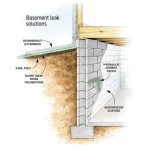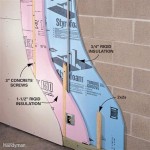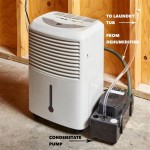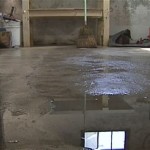What to Do When Your Basement Floods: A Comprehensive Guide
Discovering a flooded basement can be a daunting experience. Whether due to heavy rainfall, a burst pipe, or a malfunctioning sump pump, basement flooding can cause significant damage to your property and belongings. However, by acting quickly and efficiently, you can minimize the impact and restore your basement to its former condition.
Immediate Actions
Upon discovering a flooded basement, take the following steps promptly:
- Turn off the electricity: Locate your electrical panel and shut off the main breaker. This is crucial to prevent electrical hazards.
- Evacuate the area: If the flooding is severe or there is any electrical danger, evacuate your family and pets immediately.
- Call for help: Contact a water damage restoration company as soon as possible. They have the necessary equipment and expertise to properly mitigate the damage.
Safety Precautions
For your safety, follow these precautions while dealing with a flooded basement:
- Wear protective clothing: Wear rubber boots, gloves, and a mask to protect yourself from contaminated water and debris.
- Be cautious of structural damage: Avoid walking or standing in areas where the ceiling or walls appear weakened.
- Ventilate the area: Open windows and doors to ventilate the basement and prevent mold growth.
Water Removal and Cleaning
Once the safety precautions are in place, begin the process of removing water and cleaning your basement:
- Pump out the water: Use a submersible pump to remove the floodwater. Start from the lowest point in the basement and work your way up.
- Dispose of contaminated items: Throw away any items that have been submerged in floodwater, including porous materials like drywall and carpet.
- Clean and disinfect surfaces: Use a bleach solution (1 cup bleach to 5 gallons of water) to clean and disinfect all surfaces exposed to floodwater.
Restoration and Prevention
After the water has been removed and the basement is cleaned, focus on restoring your property and preventing future flooding:
- Dry out the basement: Use fans and dehumidifiers to thoroughly dry out the basement. This may take several days or even weeks.
- Repair or replace damaged materials: Contact a contractor to repair any structural damage or replace damaged materials such as drywall, flooring, and appliances.
- Install a sump pump or backup system: Consider installing a sump pump with a backup battery or generator to prevent future flooding.
Insurance Coverage
Check your homeowner's or renter's insurance policy to determine if you have coverage for basement flooding. Report the damage to your insurance company promptly to file a claim.
Conclusion
Basement flooding can be a stressful and costly experience, but by following the steps outlined in this guide, you can minimize the damage and restore your basement to its former condition. Remember to prioritize safety, take immediate action, and seek professional help when necessary.

Flooded Basement Cleanup Who To Hire And Steps Take Bob Vila

Water In Your Basement What To Do And Who Call Forbes Home

6 Simple Ways To Prevent Basement Flooding American Dry

Handling Basement Flooding And Prevention

How To Deal With A Flooded Basement Disaster Recovery Hygiene Blog

How To Clean A Flooded Basement News And Events For Systems Inc

Basement Flooding Will Become More Common With Global Warming

Tips For Handling Water In Your Basement Zoeller At Home

Know What To Do If Your Basement Floods

How To Prevent Basement Flooding Woodard








